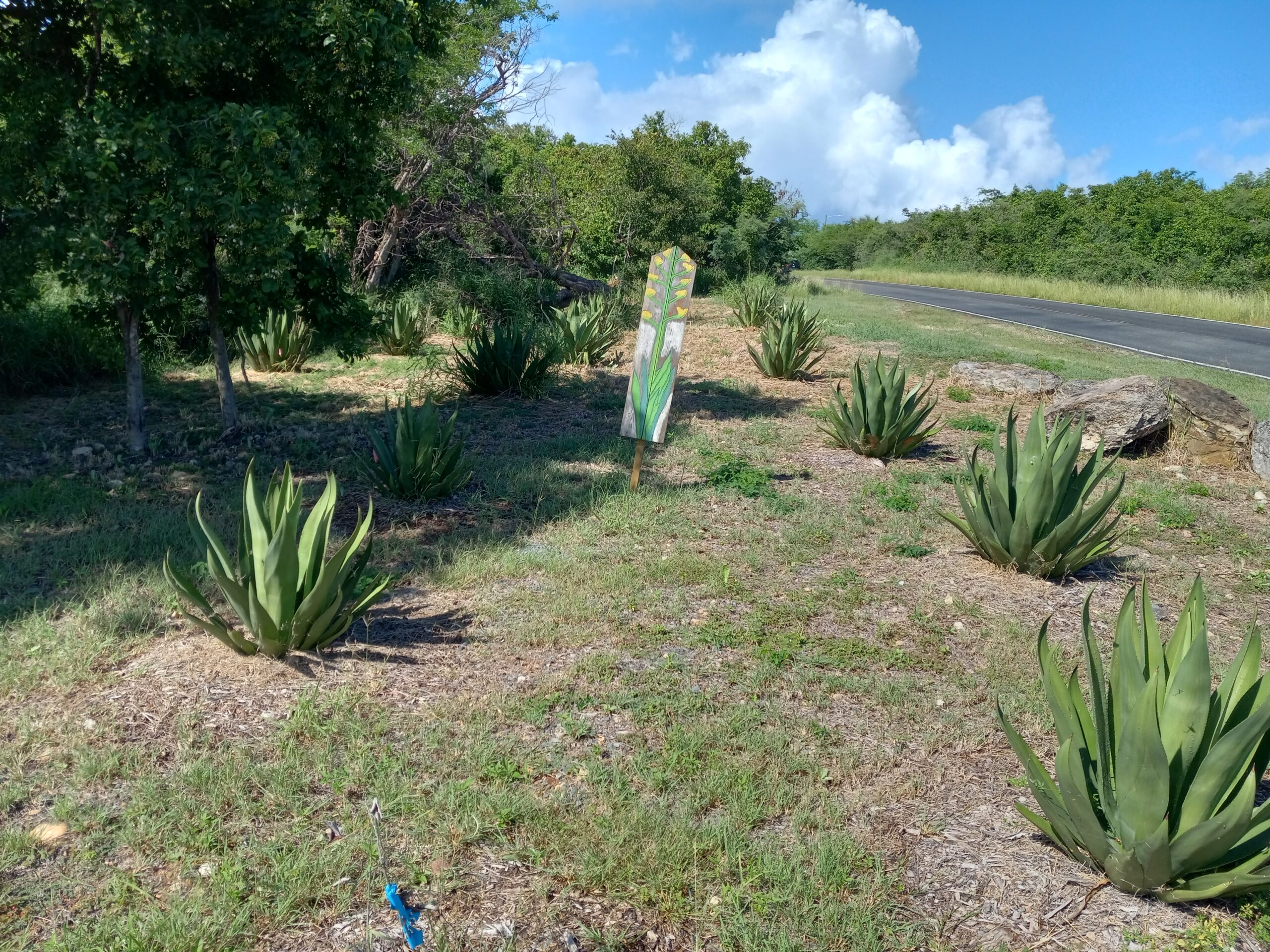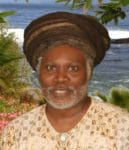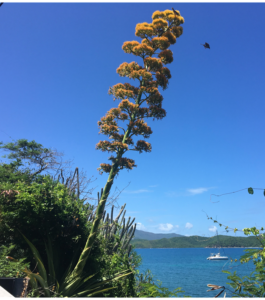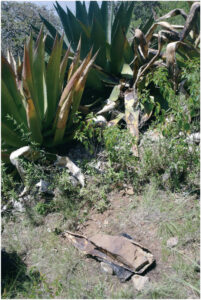
Like other ocean islands, the Virgin Islands are rich in rare and local plant species not found elsewhere in the world. The geological history of the Virgin Islands helps to explain plant distribution. The Agave eggersiana is a unique plant to the Virgin Islands landscape, but it is endemic only to the island of St. Croix. Endemic simply means an organism that is restricted or peculiar to a locality or region of the world.

The Agave eggersiana is unique to St. Croix tropical dry forests that almost went extinct. This was due to colonial agricultural activities and decades of widespread indiscriminate land clearing that almost eliminated the plants of its habitat. There are very few natural stands of Agave eggersiana growing wild that remain on the island today. Its natural habitat is mostly in the hillsides and plains in the eastern subtropical dry forests of St. Croix.
Today, the major threat for this endemic plant of the Virgin Islands is habitat loss from residential and tourist development, exotic pests like the Sisal weevil (Scyphophorus acupuncttatus) as well as feral animals. In 2014, Agave eggersiana — Egger’s Century Plant — was listed as endangered under the protection of the Endangered Species Act. It is a perennial plant that grow about 5 feet tall and send out an inflorescence, or spike that can reach 20 feet or more in height. Some people thought the Agave eggersiana was our traditional cultural Christmas tree. It is not. The Inkberry (Randia aculeata) tree is our islands’ unofficial territorial Christmas tree.
The Agave missionum, known locally as Century Plant or Karata, is native to Puerto Rico and the Virgin Islands, excluding the island of St. Croix. The genus of this plant has 300 species that were distributed in areas of the dry tropical Americas. Nevertheless, in the mid 20th century, the early continental settlers in the Virgin Islands, which are referred to in our culture as white people, in the old days began to use the Agave missionum as a Christmas tree. Continental simply means coming from the continental United States.
Agave missionum is a large perennial shrub with a huge rosette base of sharp and thick leathery pointed leaves, which adapted well to growing on the coastal rocky outcrops in the harsh and dry environment of the Virgin Islands. Believe me, the plant stands out like a tall “skyscraper” on the landscape of the Virgin Islands with a giant flower stalk that can grow 4 to 6 inches a day and more than 20 feet tall.

A gigantic flower that is in the center of the stalk can reach about 15 to 24 feet tall with many lateral branches in the upper portion of the plant bearing bright yellow 2½-inch blooms in a dense cluster. It is a beautiful sight to behold in the landscape of the islands, watching the bright orange-yellowish flowers. You will also see the Agave missionum blooming on some of the surrounding small islands or cays of the Virgin Islands. The flowers can last for about 4 to 6 months in blossom.
The flowers, however, have great importance for many of the islands’ wildlife, such as our native birds, bats, and insects. The nectar of Agave missionum is so important, especially to bees that humans depend on for honey. The plant also has medicinal value to humans. A juice from the leaves has been used as a laxative, a diuretic, a treatment for syphilis, etc. According to David W. Nellis, “The plant is a source of steroidal sapogenins.”
One of these steroidal sapogenins, hecogenin, commercially was extracted from agave sisilana. It is a source of cortisone and other pharmacological active compounds. The diosgenin from the agave plant was the original source material for the manufacture of oral contraceptives. As time progresses, however, the flower stalk turns brown and dries; then the seed pods open and are dispersed by the wind into the air. Eventually, the parent plant dies after the flower blooms once.
Nevertheless, the flowers are replaced by either small bulbils or seed pods on the stalk of the parent plant that has the potential to mature into a Century plant. On the other hand, the fruits of the Agave missionum Century plant contain numerous black, flat, and triangular seeds about one-half inch long.
However, it is the skeleton of the Agave missionum plant’s dry stalk that was used as a Christmas tree by continental settlers of the Virgin Islands. Both the Agave eggersiana and Agave missionum are endangered, threatened, rare, native, and endemic plant species threatened by a weevil, which I mentioned earlier as Scyhophorus acupunctatus. This insect is native to Mexico and has found its way to the Virgin Islands, probably from ornamental plant shipments from Florida.

The shipping of non-native or native plant species into the Virgin Islands from elsewhere with pests is a major threat to a healthy environment and the agricultural industry of these islands. I have seen with my own eyes plants from big commercial garden centers with pests and diseases. There are federal and local state laws across the United States for the regulation of nurseries and the shipment of plants within the country and for export as well.
The law says, “All trees shall comply with federal and state laws and regulations requiring observation for plant disease, pests, and weeds. Observation certificates required by law shall accompany each shipment of plants.” Therefore, it is important for all nurseries in the Virgin Islands that their plants are clean from pests from whatever company or companies they obtained plants from. This also includes soil and other plant materials like peat moss.
Furthermore, it is our local nursery companies’ responsibility, the Department of Agriculture, and Customs at our ports to protect our islands’ environments and the public at large. Agave missionum and Agave eggersiana are two of many examples where pests can cause a plant to become extinct by the destruction of habitats by humans doing irrepreparable damage to the islands’ natural environment.
— Olasee Davis is a bush professor who lectures and writes about the culture, history, ecology and environment of the Virgin Islands when he is not leading hiking tours of the wild places and spaces of St. Croix and beyond.





